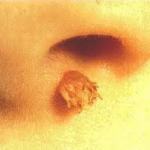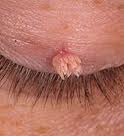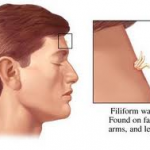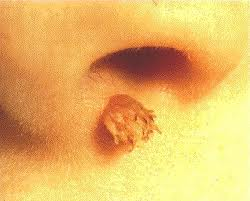Warts are a condition that develops from the HPV or Human Papilloma Virus as it is technically called. While most warts are not considered dangerous and are benign, it is still a virus and needs to be treated as such. Any type of wart can affect someone’s social life and even lead to self-esteem and confidence issues down the road. There are many different forms of warts, over 100 HPV viruses have been found at this point, and there will probably be more to come. Every wart that results from an HPV virus is different and needs to be treated in its own way. Filiform warts are a form of the HPV virus but unlike many other warts, they should be easy to treat.
What is a Filiform Wart?
 A filiform wart is completely different from a planters or a common wart. They are not hard to treat and are a bit unusual in their form and appearance. They are not your typical warts and thankfully are not medically dangerous. They can however be annoying, embarrassing, and hard to deal with.
A filiform wart is completely different from a planters or a common wart. They are not hard to treat and are a bit unusual in their form and appearance. They are not your typical warts and thankfully are not medically dangerous. They can however be annoying, embarrassing, and hard to deal with.
What does a Filiform Wart look like and where do They Appear?
Filiform warts are like no other wart in their appearance. They tend to appear on the neck and face which are why they have also been coined facial warts. The areas on the face most affected by filiform warts are the eyelids, lips, and neck making them hard to hide as well as deal with. They are not your normal raised and round warts, instead they appear to look more like small branches or twigs that are growing out of your skin. Their appearance is long, narrow and they have a flesh color to them. What is most unusual about filiform warts is the speed and aggression with which they attack. They spread quickly and if nothing is done can get worse over time.
What are the Causes of Filiform Warts?
 Filiform warts are caused by the HPV virus just as all other warts are. They are specifically caused by the HPV strains 1, 2, 4, 27, and 29. All of these strains seem to combine to cause filiform warts to form once you are exposed to these HPV viruses. The HPV virus is started when it works its way through a cut, scratch, and abrasion and multiplies rapidly and causes skin cells to grow just as quickly. It thrives in the warmth and moistness of the epidermis, which results in the rapid multiplication of the skin cells than push upward and outward. This explains the branched and stalk like appearance of the filiform warts.
Filiform warts are caused by the HPV virus just as all other warts are. They are specifically caused by the HPV strains 1, 2, 4, 27, and 29. All of these strains seem to combine to cause filiform warts to form once you are exposed to these HPV viruses. The HPV virus is started when it works its way through a cut, scratch, and abrasion and multiplies rapidly and causes skin cells to grow just as quickly. It thrives in the warmth and moistness of the epidermis, which results in the rapid multiplication of the skin cells than push upward and outward. This explains the branched and stalk like appearance of the filiform warts.
What are the Symptoms of Filiform Warts?
Filiform warts grow so rapidly that it is highly unusual for them not to be seen by the human eye. However, an early symptom of the wart is a itching in the area where the wart is forming. Once the wart is large, enough it will be easy to see. Then they spread very quickly and can bleed if in a spot where there is a lot of friction such as rubbing one’s eyes. They can grow individually but this rarely happens. They tend to form in clusters just because they spread so quickly.
While they are not life threatening, filiform warts can become painful because of their very nature and the places that they form in.
Filiform warts are highly contagious and can be passed just by using the same face towel as someone else. That’s not saying that anyone who comes in contact with someone with this particular HPV virus with contract filiform warts as people with high immune systems are unlikely to. It is just best to be careful and not share towels. You also should be careful, if you already have filiform warts, to not touch the warts and then touch other parts of your body, they spread easily and rapidly and if not treated will continue to grow and spread.
Treatment Options for Filiform Warts
 Filiform warts are the only warts that over the counter medicines and home remedies are not recommended for. The reason being that the areas such as the eyelids and lips that they infect are so sensitive and easily damaged. It is best to contact a doctor first thing in spotting a filiform wart so that he can diagnose and set up a treatment plan for you.
Filiform warts are the only warts that over the counter medicines and home remedies are not recommended for. The reason being that the areas such as the eyelids and lips that they infect are so sensitive and easily damaged. It is best to contact a doctor first thing in spotting a filiform wart so that he can diagnose and set up a treatment plan for you.
Your doctor will most probably use immunotherapy treatments to start with as the warts are in the facial area and he will want to avoid scarring if at all possible. The topical or injected substance will be put on the warts in order to try and trigger the body’s natural immune system to get rid of the warts on its own without having to go into a more invasive treatment option.
